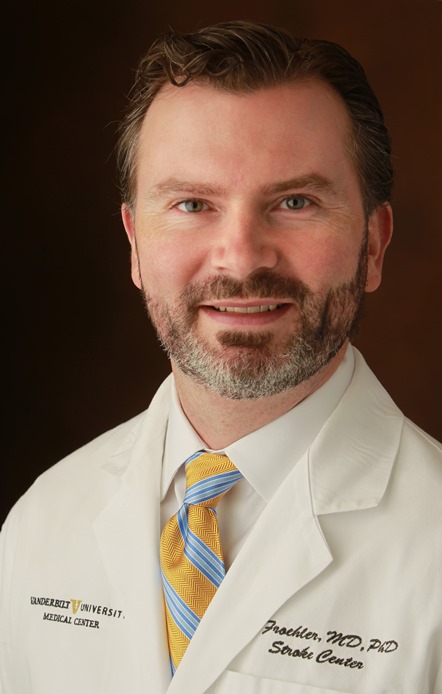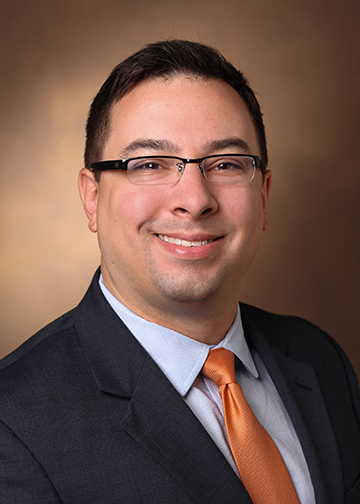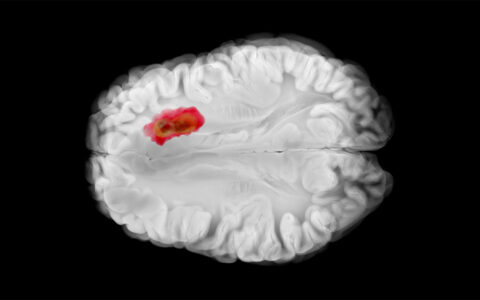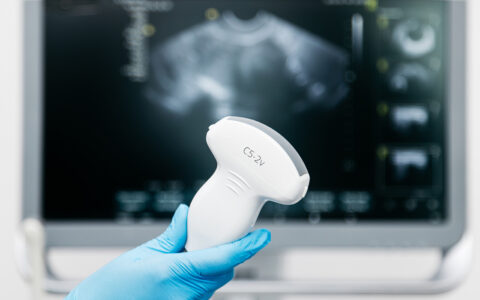Each year, cerebrovascular specialists at Vanderbilt University Medical Center receive hundreds of referrals for unruptured aneurysm assessment, making VUMC one of the largest referral centers in the Southeastern United States.
Referring providers for both children and adults benefit from comprehensive care that extends far beyond initial treatment, explained Vanderbilt neuro-interventionalist Michael Froehler, MD, PhD.
“We’re not just here to do surgery. The moment you identify an aneurysm in one of your patients and send it to us, we take it from there. We provide comprehensive care and long-term follow-up for every patient, whether or not they need surgery,” Froehler said, noting that patients are encouraged to continue seeing their local neurologists, as well.
Rapid Assessment
The Vanderbilt team typically sees new referrals in a matter of days. Standard of care includes neuro imaging, risk stratification and patient education to help temper fears that typically surround an aneurysm diagnosis.
“When patients get diagnosed with an aneurysm, they are generally quite anxious,” said Vanderbilt neurosurgeon Matthew Fusco, MD. “Our goal is to get them into clinic within a week or even the next day. Even if it’s not a dangerous aneurysm, we can get a plan in place.”
Froehler said for most patients, rupture risk is low and doesn’t justify immediate treatment—despite Vanderbilt’s expertise in both endovascular interventions and open surgery. Instead, they opt for observation.
“These patients still need to be followed over time, because what is a 2-millimeter low-risk aneurysm today might become a 10-millimeter high-risk aneurysm as early as next year—or it could be 10 years from now.”
Vanderbilt specialists see these patients for repeat imaging and follow up several months later, depending on the patient and type of aneurysm. The timeline may eventually stretch to every two to five years. In the meantime, patients may be sent to specialty clinics to address related comorbidities, such as high blood pressure or untreated congenital heart disease.
Dedicated Subspecialty Team
When treatment is needed, Vanderbilt patients benefit from a dedicated team of providers who exclusively treat aneurysms.
“It’s pretty rare to have a group of people where cerebrovascular care is all they do,” Fusco said. “We have a mix of neurologists and neurosurgeons, including providers who are specifically fellowship-trained in open cerebrovascular surgery. That involves the ability to handle difficult aneurysms that need complex clipping or bypass.”
Fusco and colleagues perform microsurgical dissections and precision clippings to cut blood flow to high-risk aneurysms. Beyond open surgery, Vanderbilt’s endovascular team employs catheter-based techniques to place coils, adjunctive devices and flow diverters. All patients then receive long-term monitoring by Vanderbilt specialists.
“We’re able to do whatever needs to be done for an aneurysm. Any available treatment is something we’re not only capable of, but we do well, and may have developed or refined some of the devices or techniques,” said Froehler, who handles the majority of endovascular pediatric cases at Vanderbilt.
Expanding Options for Patients
Treatment options are expanding for patients with unruptured aneurysm, and Vanderbilt is at the forefront of these developments. The team regularly participates in nationwide trials of new devices and surgical approaches.
“With our experience, we can handle any kind of aneurysm that comes through the door,” Fusco said.
No longer limited to platinum coils, Froehler describes the nuances of intraluminal versus newer endosaccular flow diverters. He currently chairs the data and safety monitoring board for a trial investigating a new mesh plug designed to be placed directly inside an aneurysm, reducing rupture risk. He has also co-authored management guidelines for intracranial aneurysms.
Meanwhile, Vanderbilt neurosurgeons are pioneering minimally invasive approaches to intracerebral surgery, and ways to reduce time spent in the ICU.
Even with an expanding portfolio of options, “We are judicious in how we decide which patients need treatment. Our complete coverage for patients includes observation and shared decision-making,” Fusco said.
“With our experience, we can handle any kind of aneurysm that comes through the door.”
Support for Referring Physicians
The providers note that patients referred to Vanderbilt can continue to see their local neurologist for other concerns, such as neuropathy or headache management.
“That’s important,” Froehler said. “We want it to be win-win, and we want patients to keep seeing their community providers. They know their patients and we are supportive of that relationship.”
The goal, he adds, is to provide a specialty service unavailable at most centers.
“Referring providers want to know they’re covered,” he said. “We want them to know their patients will receive the best possible care for their aneurysm, whether long-term observation, surgery or another intervention.”





